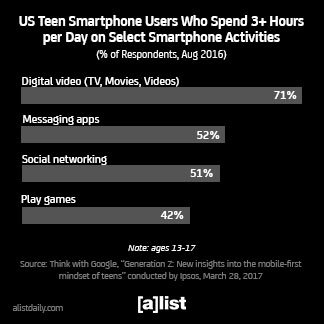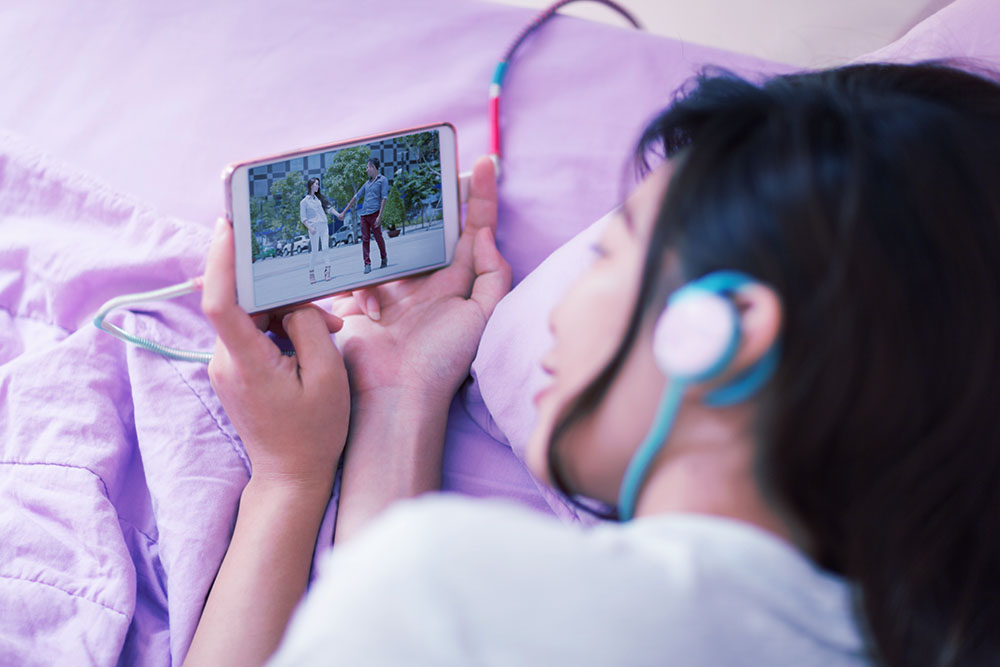This week, we find out what teenagers do on their phones all day, gamers get hardcore and people fear what they don’t understand.
Rise Of The Machines
Nervous about voice-controlled AI sharing all your secrets or devices banding together to take over the world? If so, you’re not alone. A study by Pegasystems found that a quarter of respondents are worried about that very issue. In addition, 72 percent of respondents indicated some level of fear toward AI. The study, which queried 6,000 consumers in six countries, found that only slightly more than a third liked the idea of businesses employing AI to engage with them—even if it resulted in a better customer experience. A lack of understanding about AI could, at least partially, be to blame for the fear—while 72 percent of respondents claimed to understand AI, only 41 percent knew that Amazon’s Alexa and Google Home intelligent assistants utilized the technology.
A separate study by InsideSales found similar results. Asking nearly nearly 2,000 people in the US, the company found that 42 percent of consumers don’t trust AI, although nearly 55 percent say they have used it outside of work.
Consumers don’t seem to fear home automation, according to findings by Internet of Things (IoT) firm Parks Associates. According to a new report, 55 percent of US broadband households want to use their voice to control their smart home and entertainment devices.
Native And Hands-On
Early adopters of native advertising aren’t investing as much anymore, according to a three-year study from Nativo. Based on data from over 600 brands, Nativo’s study found that companies in automotive, tech B2B, entertainment, tech B2C and finance & insurance—all early adopters of native advertising in 2014—saw their aggregate share of budget decline from 57 percent in 2014 to 37 percent in 2016. Overall, native ad spend among those surveyed has increased by 600 percent from 2014 to 2016.
Marketers are getting a lot more hands-on with their advertising, and 57 percent of US digital marketing and media practitioners polled in January 2017 said they expect to be engaged in cross-channel measurement and attribution this year. This research by the Interactive Advertising Bureau (IAB) and Winterberry Group found that this time of measurement is expected to take up the most resources this year, followed by programmatic media buying and cross-channel audience identification/matching.
Preferred For . . . You Know
According to data from VR porn company, BadoinkVR, 40 percent of its video downloads this year have been for Samsung Gear VR. The next most popular headset, Google Cardboard accounted for only 23 percent. Oculus Rift and HTC Vive together accounted for 25 percent of all video downloads since the beginning of the year, the company told Variety, and PlayStation VR made up nine percent. Google’s Daydream VR headset accounted for just three percent of all downloads.
 Live From Facebook
Live From Facebook
Live broadcasts now make up 20 percent of video on Facebook, according to a post by Fidji Simo, Facebook’s VP of product. Simo went on to say that the number of broadcasts has grown more than four times over the last year.
“We’ve focused on making the Facebook Live experience more engaging, more fun and more social,” Simo wrote in the post. “We’ve added live masks and new creative effects, built features that give publishers more control and flexibility over their broadcasts, and rolled out exciting new formats like Live 360 [and] Live Audio.”
Gamers For Life
A study of 2600 people by We Know Gamers revealed that gaming is far more than a pasttime for most. Seventy-five percent of respondents said gaming will always be a part of their lives and 35 percent claimed to have played more as they got older. The survey found that a majority of gamers believe watching and playing video games will overtake the viewing and playing of traditional sports by 2022, while 58 percent believe competitive gaming (esports) should be an official sport. Given the option, 28 percent would rather be the top player of their favorite game over being a movie star (22 percent), athlete (18 percent) or music star (15 percent)
Thanks to games like Pokémon GO, the augmented reality (AR) market is expected to grow at a CAGR of more than 151 percent to reach $8.96 billion by 2021, per estimates by Technavio.
Mo’ Mobile
Updated forecasts by eMarketer indicate that the average US adult will spend 2 hours, 25 minutes per day using mobile apps in 2017, a jump of 10.3 percent over last year. Time spent with mobile apps will reach 19.9 percent of average daily total media time this year, the company noted. “Among mobile internet users, mobile apps will account for 84.9 percent of total mobile time spent, with mobile web browsing making up the remainder. Meanwhile, time spent with a mobile browser is expected to remain stagnant at 26 minutes per day in 2017.”
This should come as no shock, but teenagers really love their phones—especially to watch video. According to a Think with Google survey conducted by Ipsos, roughly seven in 10 teen smartphone users spend at least three hours per day watching video on their phones—more than any other activity. Over half (51 percent) of teens said they spend three or more hours a day on social networks, and another 52 percent spend the same amount of time on messaging apps.

